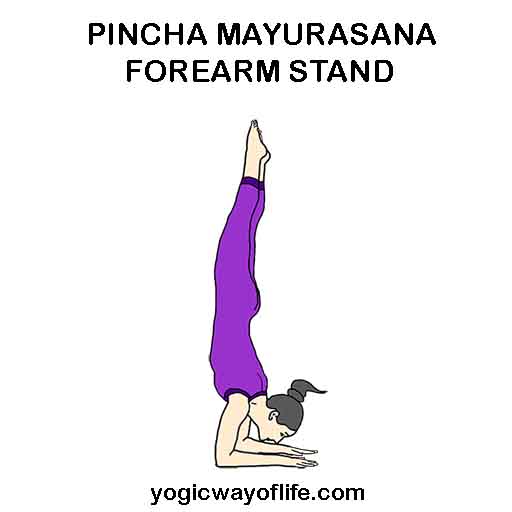Pincha Mayurasana or the feathered peacock pose is nothing but the inverted forearm-stand. In Sanskrit, Pincha means feather, Mayur means peacock and Asana means a Pose. Pincha Mayurasana strengthens arms and shoulders and require a good sense of balance. It can be very challenging for beginners. Beginners can make use of the wall for support while learning this asana. It will be good if you have someone oversee your practice, till you master it.

How to do Pincha Mayurasana (Feathered Peacock Pose)?
- Start in the kneeling position.
- Bend forward and place your forearms on the floor in front of you.
- Slide your legs slightly backwards and raise your buttocks up.
- Now slide your legs forwards towards your forearm so that your body is creating an acute angle with the floor.
- In this position, breathe in and quickly raise one of your legs up straight. The other leg continues to be on the floor.
- Now raise the other leg up to join the first leg. Both legs point towards the ceiling. The entire body weight is balanced on the forearms alone. This is the final position of Pincha Mayurasana.
- Maintain this position for as long as you are comfortable.
- To release the pose, first bring down one of the legs to the floor. Then bring the other leg down. Now, bend down and bring both your knees to the floor. Raise yourself up to the sitting kneeling position. You may lie down in any resting pose like Shavasana for few minutes if needed.
Benefits of Pincha Mayurasana (Feathered Peacock Pose)
- Pincha Mayurasana strengthens the arms and shoulders.
- It creates a good sense of balance.
- It stretches the muscles of the back, shoulders and abdomen.
- Pincha Mayurasana can calm down the mind and release stress.
- It gives all the benefits of inverted asanas.
Contraindications for Pincha Mayurasana
- Those with any injury to arms, shoulders and hips should not do this pose.
- If you had any recent surgery of arms, shoulders, chest, abdomen or legs, then avoid this asana.
- Pregnant women should avoid this asana.
- Women should not do this during menstruation.
